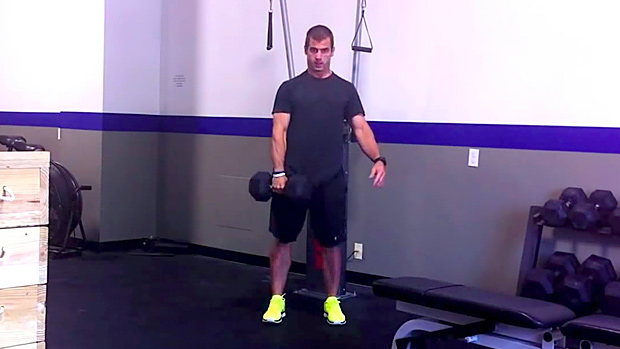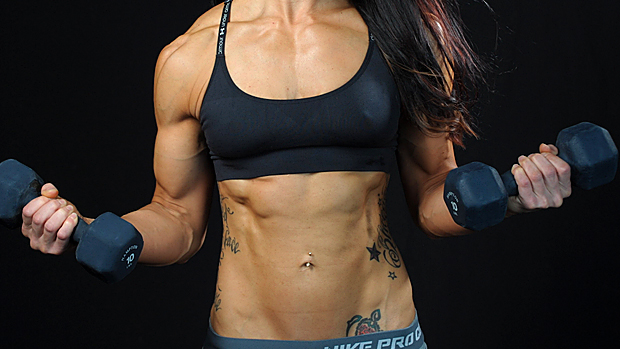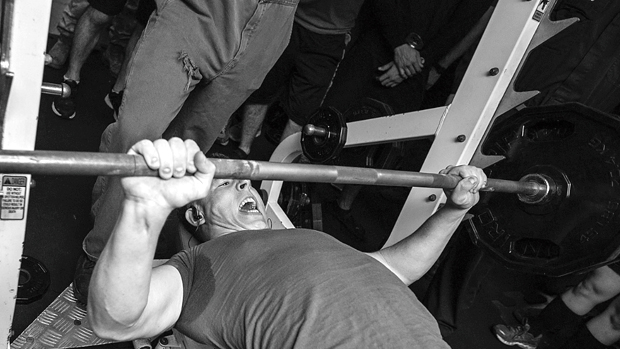Most trainers will tell you that behind-the-neck pulldowns are dangerous. But why? To better understand, we must first look at the research on shoulder range of motion (ROM) and behind-the-neck overhead presses, which are also commonly thought to be unsafe.
Research investigating the impact of behind the head or in front of the head overhead pressing technique on shoulder range-of-movement and spine posture concluded that, "For participants with normal trunk stability and ideal shoulder ROM, overhead pressing is a safe exercise (for the shoulder and spine) when performed either in-front or behind the head."
Did you catch that? The motion required to do behind-the-neck presses is likely only injurious for those who lack the shoulder ROM to perform them.
Additionally, although many are concerned with the shoulder impingement involved in the behind-the-neck press, when the shoulder is loaded in this position (abduction and external rotation), subacromial space increases (compared to no load), and thus, unloaded studies cannot be extrapolated.

Not to mention, in general, subacromial impingement and irritation is likely of little concern, since every time you raise your arm overhead there's some level of contact of the rotator cuff on the acromion. So there's always some level of impingement with arm elevation. But you don't want excessive contact that causes irritation and inflammation, which can lead to shoulder impingement syndrome.
So, if you've got the shoulder mobility for it and choose to use behind-the-neck presses, go ahead and integrate it with other overhead pressing variations.
And why would you want to do them? Maybe because you feel them more in a part of your shoulders that you're trying to develop, or maybe you feel that the motion helps you train for a specific task, like holding the weight up for an overhead squat.
Now, any movement can be overused. So, I wouldn't say to ALWAYS use behind-the-neck presses because an argument can be made that doing overhead presses in the plane of the scapula – lifting the arms at roughly a 30-degree angle to the torso instead of straight out to the sides – is one strategy that can create the same general demands on the shoulder musculature, but potentially lessen the unwanted stress on the rotator cuff tendon. (21) On the flipside, if you don't use it, you lose it.
So, incorporating some behind the neck pressing, if you posses the ample shoulder ROM to do so, can help you better maintain that ability and strength to control that ROM if you ever need to perform such an action in life.
The same can be said for incorporating some behind-the-neck pulldowns. If you've got the prerequisite shoulder ROM, it's fine to add them into your workouts because maybe you like how they feel on your back and shoulders.
In fact, research comparing the muscle activity in behind-the-neck, front of the neck, and V-bar (close grip) pulldowns found no differences in lat muscle activity in the different variations. But it did show a higher activity in the posterior delt and biceps brachii during the behind-the-neck pulldown. (22)
Or if you feel the motion helps you train for a task such as holding the barbell tighter during heavy back squats, go ahead and integrate it with other pulldown variations.
But many trainers and coaches get worried that when the shoulder joint is placed in a position of "horizontal abduction" combined with "external rotation" – the position involved in behind-the-neck presses and pulldowns – more stress is placed on the rotator cuff in order to stabilize the joint.
That's a reasonable concern, but it's one of application, not the exercise itself. This is because all resistance exercises place stress across joints and tissues. And the only way to improve strength and functional capacity is to give the body a stress (resistance) in order to create an adaption that increase its tolerance to stress.
So, it makes sense to incorporate some behind-the-neck pulldowns to simply help you maintain that ability and the strength to control that action just in case you need it. You never know what life will throw your way. Just don't let your ego get the best of you by progressing too fast or trying to go heavier than what you can control.
Speaking of control and technique, if you've got to use excessive cervical spine flexion to perform behind-the-neck presses or pulls, it usually means that you don't posses the prerequisite shoulder ROM needed to safely do these exercises.
References
- Hyght C. Five Exercises You Should Stop Doing… Forever!, T-Nation LLC, 2010.
- McKean MR and Burkett BJ. Overhead shoulder press – In-front of the head or behind the head? Journal of Sport and Health Science 4: 250-257, 2015.
- Longo S, Corradi A, Michielon G, Sardanelli F, and Sconfienza LM. Ultrasound evaluation of the subacromial space in healthy subjects performing three different positions of shoulder abduction in both loaded and unloaded conditions. Phys Ther Sport 23: 105-112, 2017.
- Lewis JS. Subacromial impingement syndrome: a musculoskeletal condition or a clinical illusion? Phys Ther Rev 16: 388-398, 2011.
- Flatow EL, et al. Excursion of the rotator cuff under the acromion. Patterns of subacromial contact. Am J Sports Med. 1994 Nov-Dec;22(6):779-88.
- Greenfield B. Special considerations in shoulder exercises: plane of the scapula. In: Andrews JR, Wilk KE. The Athlete's Shoulder. New York: Churchill Livingstone; 1994: 513-522.
- Sperandei, Sandro & A P Barros, Marcos & C S Silveira-Júnior, Paulo & Oliveira, Carlos. (2009). Electromyographic Analysis of Three Different Types of Lat Pull-Down. Journal of strength and conditioning research / National Strength & Conditioning Association. 23. 2033-8.
- Durall, Chris & Manske, Robert & Davies, George. (2001). Avoiding Shoulder Injury From Resistance Training. Strength & Conditioning Journal. 23. 10.




